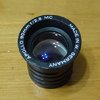Mr_Flintstone
Member
I usually use my seating die to seat and crimp lead bullets, but I bought some 93 gr 38 special bullets without a crimp groove, and I needed to use my factory crimp die.
I followed the directions that came with the die, and adjusted to heavy crimp, but I can't tell that it has crimped appropriately.

Sorry for the quality, but you can see that there is no roll, taper, or collet crimp. This round is adjusted 1 1/2 turns in, and the instructions say that 1 turn is a heavy crimp.
What might I be doing wrong?
I followed the directions that came with the die, and adjusted to heavy crimp, but I can't tell that it has crimped appropriately.

Sorry for the quality, but you can see that there is no roll, taper, or collet crimp. This round is adjusted 1 1/2 turns in, and the instructions say that 1 turn is a heavy crimp.
What might I be doing wrong?





